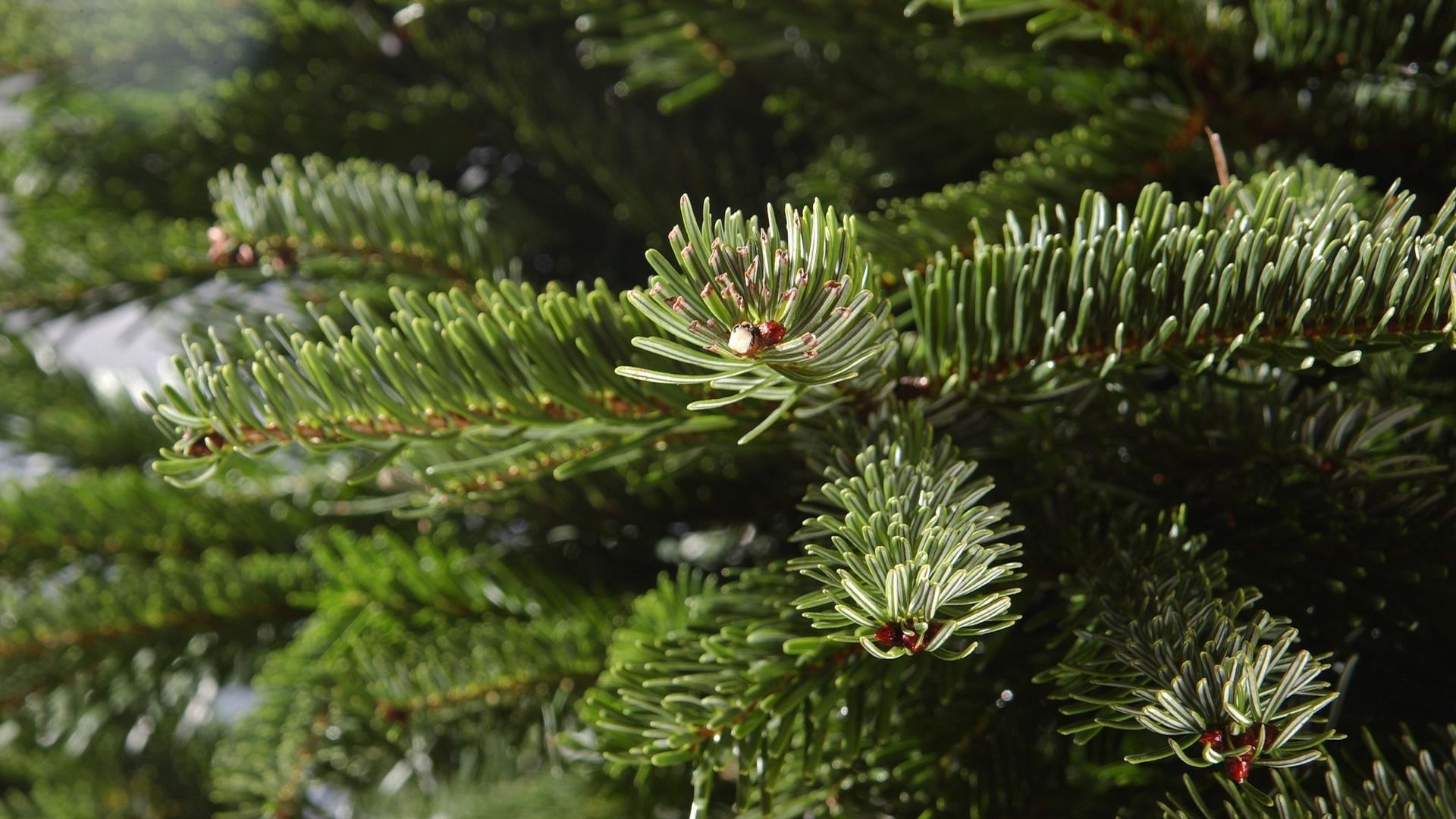It has nothing to do with holiday spirit. Why your Christmas tree loses its needles.
A Christmas tree bough gets its close-up. Why do some trees lose their needles more quickly than others?
With the holidays just around the corner, another tradition is in full swing for many Americans: choosing the perfect Christmas tree.
Last year, Americans took home 25.9 million live Christmas trees, according to a survey by the National Christmas Tree Association. We all have our own ideas about the qualities that make a winning tree — from the perfect cone shape, to “fits perfectly in the living room.” But for Gary Chastagner, a plant pathologist at Washington State University, there’s another can’t-miss criterion: How long will the tree keep its needles?
While a fresh, woodsy-smelling fir marks the start of the holidays, a dry, thinning tree can send the fun right out of the room — leaving a trail of crunchy needles in its wake. Chastagner says the biggest factor in needle loss actually has to do with tree genetics. “If you look nationally at what the most common species are, they would be Fraser fir, balsam fir, Douglas fir, noble fir,” he notes. And once indoors, one conifer species doesn’t necessarily stay fresh as long as another does.
“Some tree species are predisposed to shed needles much more so than others,” Chastagner says. According to his research, species like noble fir and Fraser fir naturally come out well, showing very little needle loss for six or more weeks after harvest.
But properly caring for indoor Christmas trees can also help stave off needle loss, by keeping trees hydrated. Chastagner explains that a tree will drop needles as a protective measure if it begins to dry out. “You know, so that under natural conditions it wouldn’t continue to dry to a point where the tree would be damaged,” he says. “It's sort of a defense mechanism that trees have.”
In his ongoing research, Chastagner is also focusing on a less-understood cause of needle loss in conifers: Ethylene, a naturally-occurring plant hormone. While ethylene helps fruits ripen, one Canadian study has found that in cut balsam fir, the hormone seems to signal that it’s time for the tree to drop its needles.
“We currently have a project underway to look at the role of ethylene in needle loss in a broader range of species,” he says, “and we sort of have a mixed result at this point in time. It's not clear. These studies have just started.”
But early signs in Chastagner’s ethylene research already suggest there might be more to the needle-loss puzzle. “We see needle loss on trees that are stored outdoors where there's lots of air movement, and you wouldn’t expect ethylene to be the contributing factor there,” he says. “So there may be more than one thing … going on that's associated with needle loss.”
In the future, we may just bring home Christmas trees that are genetically predisposed to keep their needles, even when dry.
“Being able to develop genetic markers that would allow us to test an individual tree and tell genetically whether or not it's a source that has good needle retention … would be extremely helpful for the Christmas tree industry and consumers.”
In the meantime, he has some suggestions for shoppers heading to find their perfect tree. First rule of thumb at the tree lot? Pick out the freshest possible tree. “Does it have good color?” he asks. “Do the needles appear nice and green [and] relatively soft, they're not falling off? You shouldn’t see any needle loss on the tree, particularly green needles.”
Chastagner adds that you can also test the needles themselves for freshness: “There are certain species that you can actually take the needles off of the tree and sort of try to bend them between your fingers,” he says. “And if the needles are off of a tree that has a really high moisture content, they'll snap just like a carrot stick. And as they dry out, then they become more rubbery, and they bend a lot more.”
If you have questions at the Christmas tree lot, keep an eye out for Chastagner. Professional curiosity gets him out to see quite a few tree retailers during the holidays – even on his days off.
“At this time of year when I'm on vacation, or like at Thanksgiving [when] I’m visiting my son and his family … I usually take a few days to go visit the Christmas tree lots,” he says, laughing.
This article is based on an interview that aired on PRI's Science Friday.
